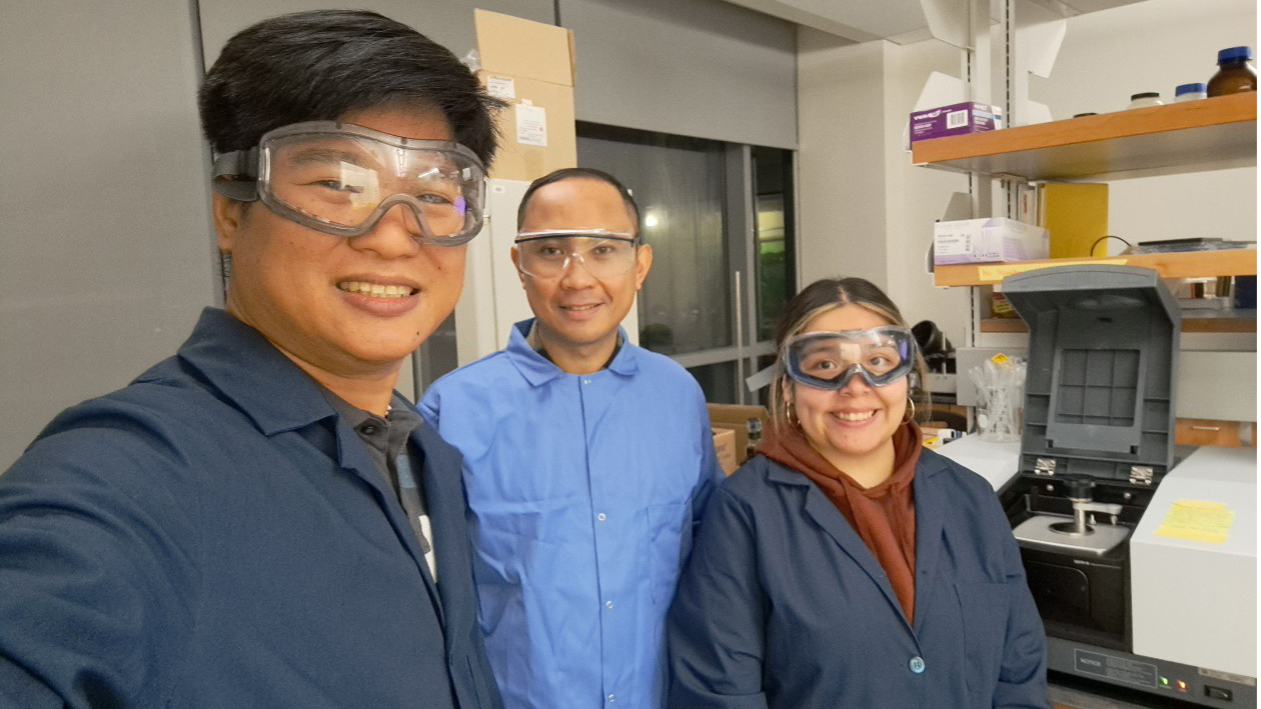Chemistry Professor, Students Publish Original Research

Associate Professor of Chemistry Dr. Gerard G. Dumancas worked with The University of Scranton graduate students and published two original research articles in American Chemical Society (ACS) journals this year. The overarching goal of Dr. Dumancas’ laboratory is to develop novel, faster and inexpensive analytical methods to detect adulteration of a wide array of food commodities including honey, turmeric powder, coffee and egg whites. In doing so, his research group is utilizing a wide array of machine learning and spectroscopic tools to develop robust multivariate calibration models for predicting adulteration in food products and other types of biological systems.
In the first manuscript, MS in biochemistry graduate student Noemi Carreto worked on research titled “Chemometrics for Quantitative Determination of Terpenes Using Attenuated Total Reflectance–Fourier Transform Infrared Spectroscopy: A Pedagogical Laboratory Exercise for Undergraduate Instrumental Analysis Students” which was published in the Journal of Chemical Education.
The project entailed a computational exercise that exposed undergraduate students in an instrumental analysis laboratory course to the process of data acquisition using advanced equipment—specifically, attenuated total reflectance-Fourier transform infrared (ATR-FTIR) spectroscopy. After data collection, students analyzed these data using the partial least squares (PLS) chemometric technique. The overall goal of this project was to develop a pedagogical laboratory exercise to expose students in the area of chemometrics, a powerful technique that uses statistics and computer applications in analytical chemistry.
The exercise provided a systematic and step-by-step guide for students to follow in the instrumental analysis laboratory. Based on feedback from student surveys, it can be concluded that this cost-effective and convenient activity successfully introduced students to the application of chemometrics for quantitatively analyzing terpene compounds through ATR-FTIR. This easily implementable two-week activity can serve as a standalone module for instrumental analysis laboratory classes and can even be adapted for integration into advanced courses covering applied spectroscopy and chemometrics.
In a second manuscript, MS in biochemistry graduate student Norwell Bautista published a research titled “Quantification of Lactobacillus reuteri ProTectis in MRS Broth Using Attenuated Total Reflectance–Fourier Transform Infrared (ATR-FTIR) Spectroscopy and Chemometrics” in the Journal of Agricultural and Food Chemistry. The overall goal of this research was to develop a faster and inexpensive analytical method for quantifying a pure culture of Lactobacillus reuteri (L. reuteri) ProTectis grown in deMan, Rogosa, and Sharpe (MRS) broth using ATR-FTIR and chemometrics. Findings from this study demonstrate the feasibility of employing a quantification technique utilizing ATR-FTIR, along with a principal component analysis–PLS chemometric model, to reliably predict viable plate count in a culture of L. reuteri ProTectis in MRS broth.
Dumancas came to The University of Scranton in the Spring of 2022 and has since then published nearly 30 manuscripts in high-impact factor journals, primarily with undergraduate and graduate students. In summer 2023, he was awarded a $50,000 research grant from the National Science Foundation (NSF) for his research involving the use of chemometrics and spectroscopy to test the purity of honey. His research efforts are presently supported by NSF Award 2327747, 2223970 and 2027402.






